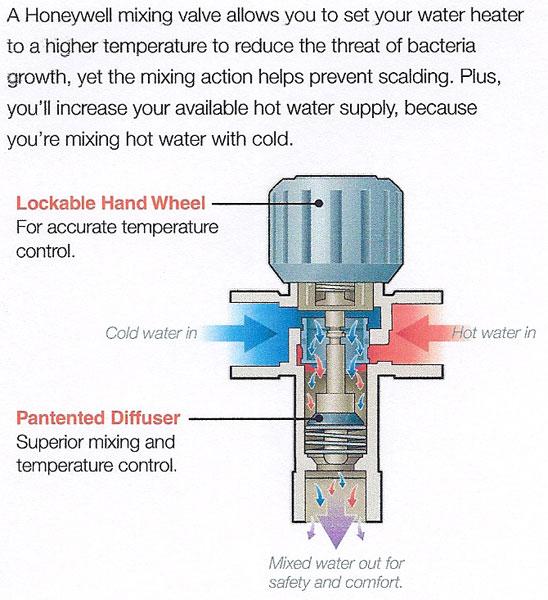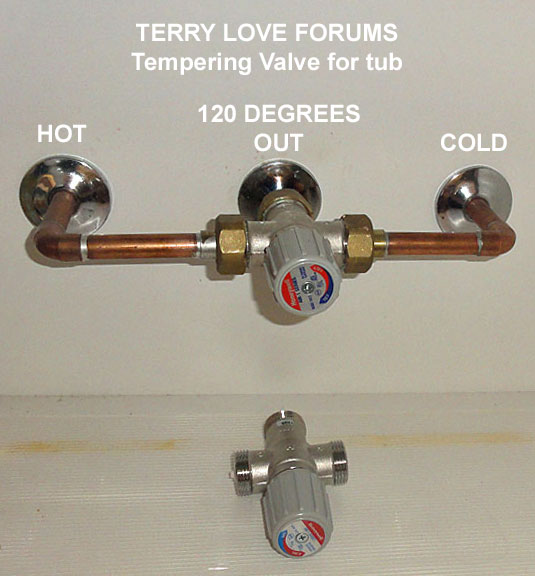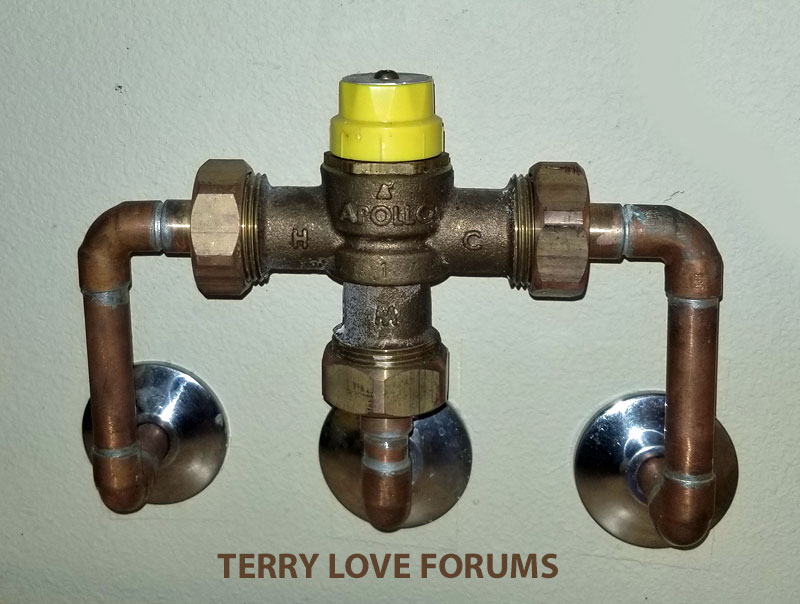I have another thread I started with regard to our water heater questions, and once we finalize our decision and installation I'll finish it out. This is a 25th hour question so here goes.
Mixing valves (with selectable thermostatic controls). Do they really extend the amount of hot water coming out of a given faucet, or do they serve primarily as a scald control? Intuitively it would seem they should extend the water heater given the water is mixed at the tank outlet. But in effect every faucet is a mixing valve, just further downstream of the water heater.
I was set on my final answer up until this afternoon but now am seeking perhaps a less expensive solution. At end of the day I just want hot water without spending a fortune if I don't have to ($4.99K for hot water to me is expensive). Tub is 75 gallons to fill line (minus the person). If a mixing valve can extend a hot water heater at least somewhat effectively, I may change my prior answer!
Mixing valves (with selectable thermostatic controls). Do they really extend the amount of hot water coming out of a given faucet, or do they serve primarily as a scald control? Intuitively it would seem they should extend the water heater given the water is mixed at the tank outlet. But in effect every faucet is a mixing valve, just further downstream of the water heater.
I was set on my final answer up until this afternoon but now am seeking perhaps a less expensive solution. At end of the day I just want hot water without spending a fortune if I don't have to ($4.99K for hot water to me is expensive). Tub is 75 gallons to fill line (minus the person). If a mixing valve can extend a hot water heater at least somewhat effectively, I may change my prior answer!



